Eric Beck was the First Solo Climber to Summit Half Dome Peak, a Grade VI Climb in Yosemite National Park
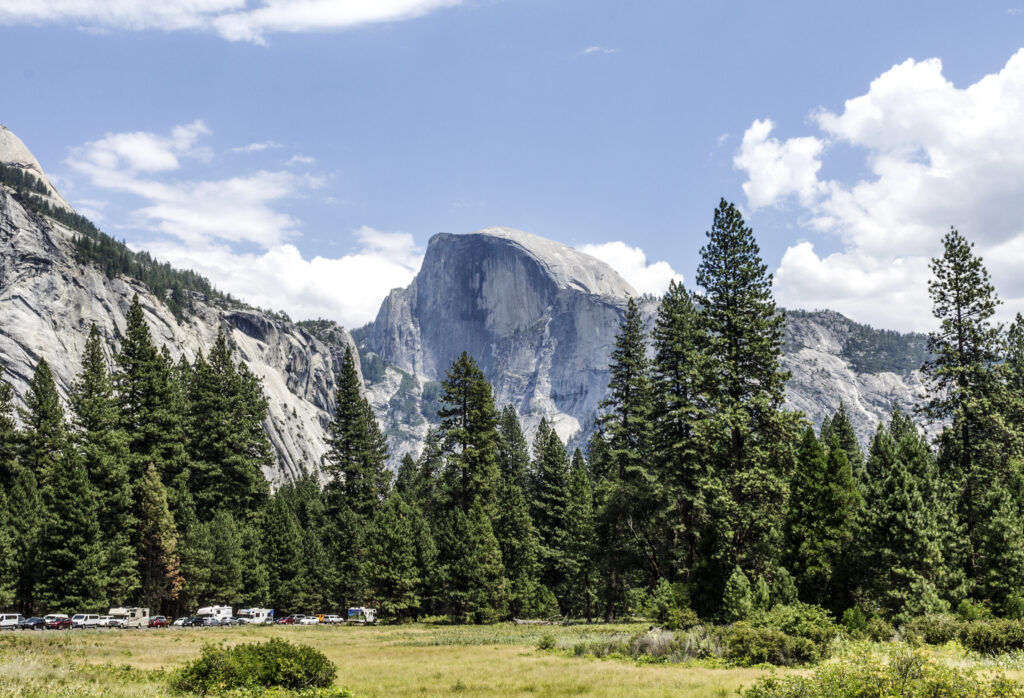
Read this description of the first solo ascent to the summit of Half Dome, in Yosemite National Park, and alternate ways of reaching the top for hikers rather than mountain climbers
Photo Credit: Breese76
I know exactly nothing about this kind of climbing…but Eric’s story, and the photos, are amazing and inspiring. Whether you’re a climber or not, this is an epic, historic tale!
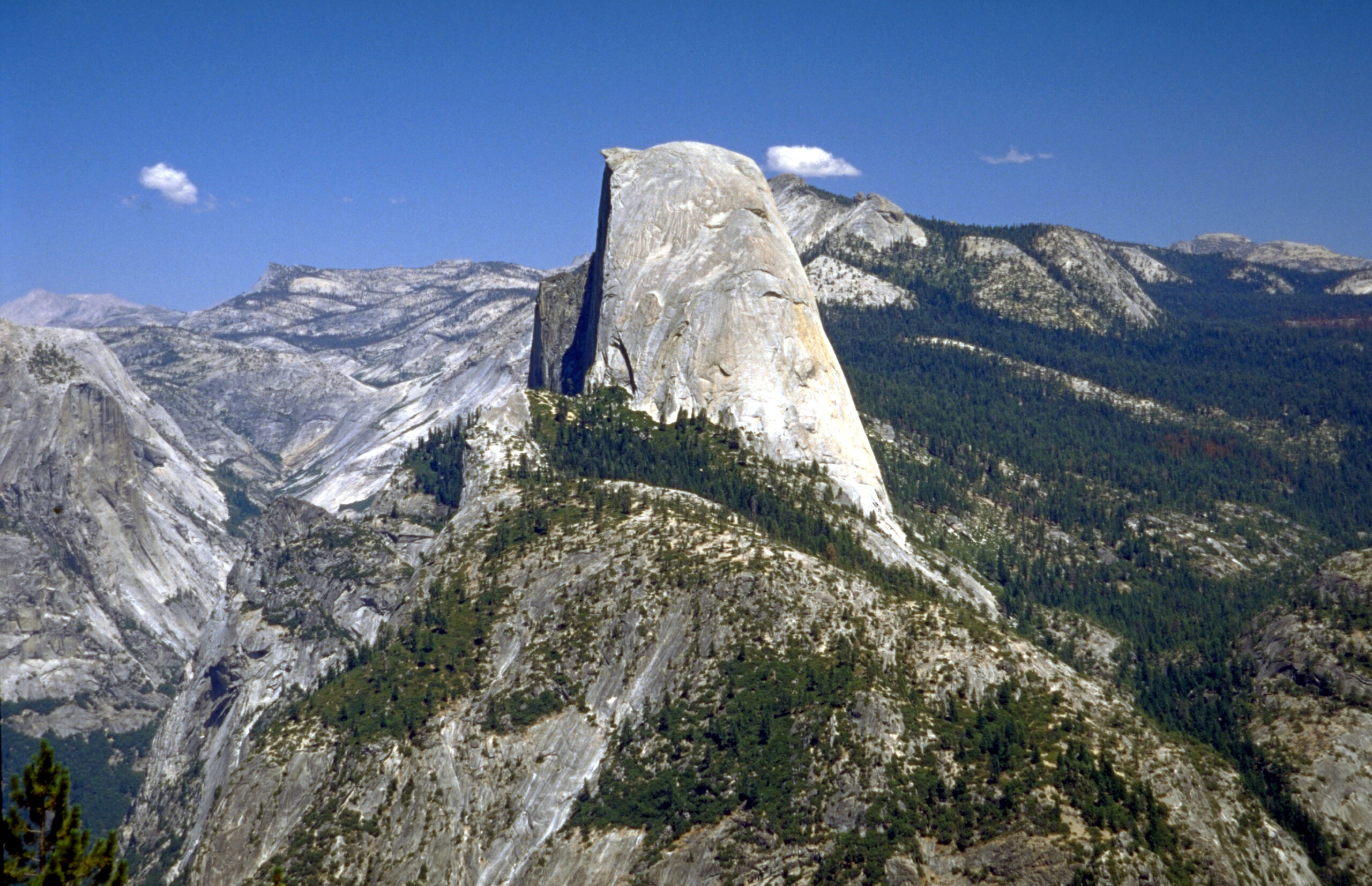
photo credit: Rainer Hübenthal 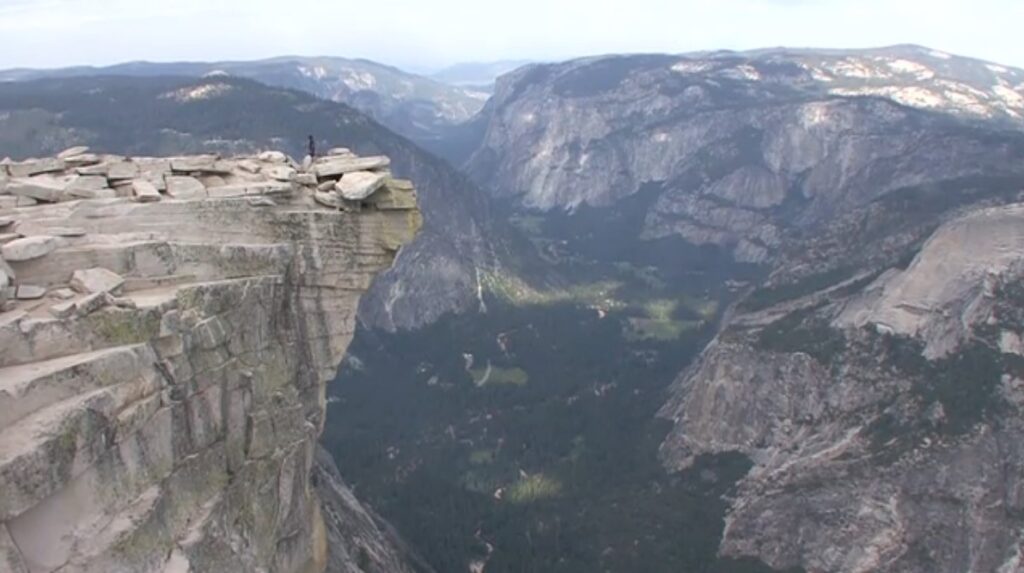
photo from National Park Service
Half Dome is a granite peak in Yosemite National Park, California. It’s named for its distinct shape – one side is a sheer face while the other three sides are smooth and round, making it appear like a dome cut in half.
The summit is 4,737 feet above the valley floor (total elevation 8846 feet).
Previous Ascents of Half Dome
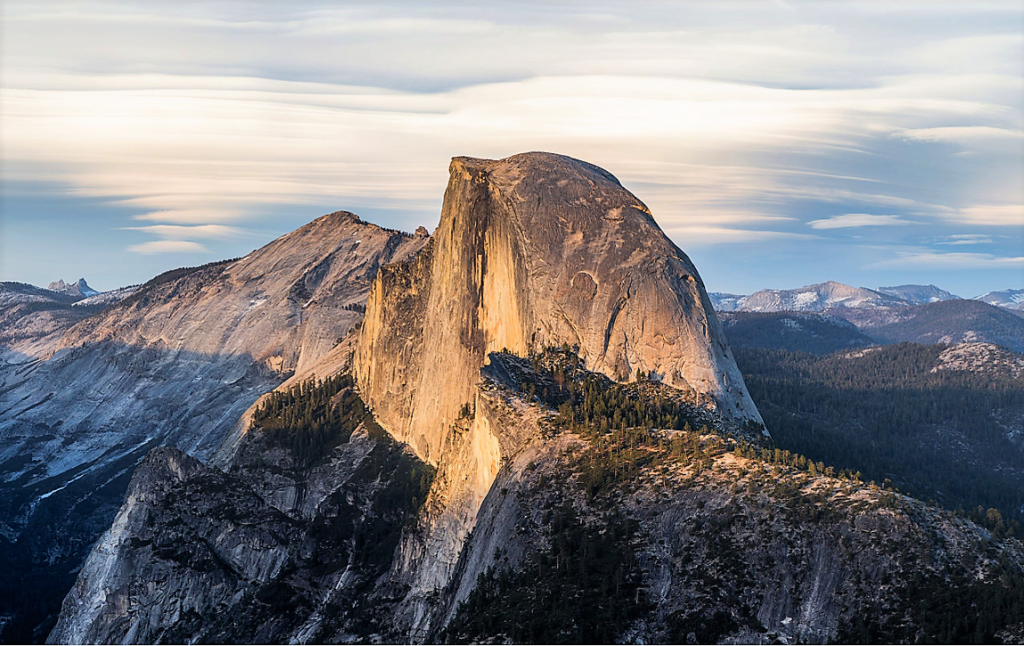
In the 1870s, Half Dome was described as “perfectly inaccessible” by Josiah Whitney, Chief of the California Geological Survey. The summit was first reached by George G. Anderson in October 1875, via a route constructed by drilling and placing iron eyebolts into the smooth granite.
The first technical ascent of the sheer vertical face of Half Dome was in July 1957, via the Regular Northwest Face route, pioneered by Royal Robbins, Mike Sherrick, and Jerry Gallwas. Their five day adventure was the first Grade VI climb in the United States. From then until he made his solo ascent in 1966, Eric estimates that there were 40 or 50 group climbs of Half Dome.
Eric – First Solo Ascent of Half Dome
Suz sez: As I mentioned, I know nothing about climbing; if you, like I, find some of the following un-understandable – have no fear – I have interjected bracketed comments of explanation along the way, and will explain toward the end of the article (or, Eric will – I emailed him about 1,000 times for more info!). Note: the photos below are from more recent climbs…there are none of Eric’s, as he was by himself.
Half Dome Solo Ascent – NW Face, July 1966, written by Eric Beck:
In good shape and climbing well, I wanted to climb the face of Half Dome. Jeff Foott and I had planned to do it, but then I heard he is bogged down in school and not in shape for it. I start thinking about with whom else I might do it. This wasn’t leading anywhere and a little voice whispered, “Solo it”.

I immediately squelched this absurd idea:
- I had never done a grade VI before.
- No one had ever soloed a Grade VI in North America.
Eric today, photo credit: Lori
But…time passed and the voice became more insistent. I was ready. Much of the climbing was not that hard. I had done some self-belayed soloing and it was not too tricky. There were good bivouac ledges along the way. Gradually, I became convinced that I would be able to pull this off.
Jerry, a friend visiting from San Diego, provided the impetus to schedule it. He agreed to help me carry all the equipment up to the base of the wall, a fair amount of work. Two ropes, a full set of hardware, food for three days which did not require cooking, and 6 quarts of water.
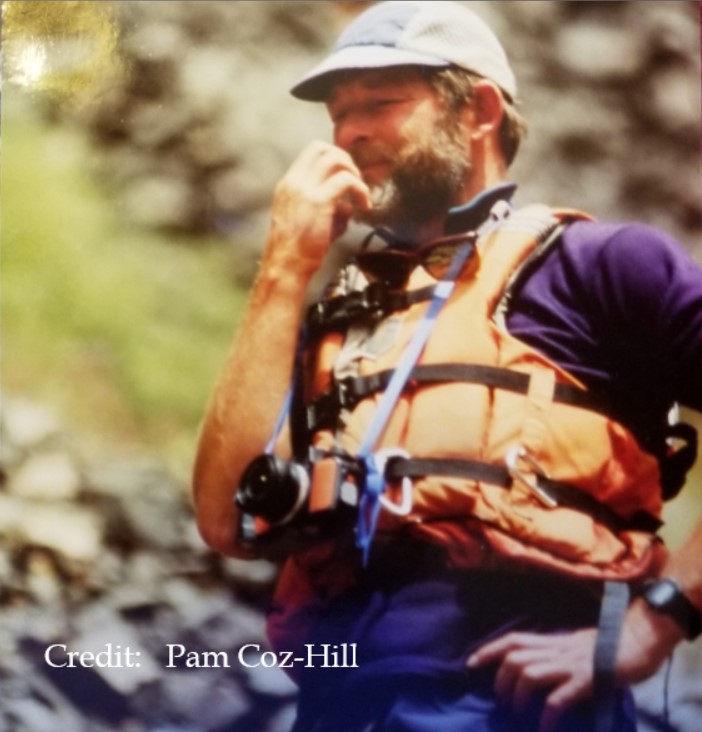
Jeff Foott was in the Valley and agreed to be ground support. Jeff and I agreed on light signals in the evening. He would be at Mirror Lake and we would do these at the time of the Firefall, when all eyes were on Glacier Point, an idea from the first ascent party. The only signal actually used was the one for “All Okay.”
Only Jeff (pictured above) and the patriarch of Camp 4, Chuck Pratt, knew I was climbing Half Dome.
Half Dome – First Solo Ascent: Day 1
In the evening, Jerry and I had a heated and somewhat bitter debate on the Vietnam War. In the morning as it was getting light, I felt very lonely at the base of the giant wall, with the summit overhangs seeming infinitely far away. Rather than think about the predicament I had gotten myself into, I just climbed, which proved to be straightforward, telling myself that in the beginning it would be easy to go down. The climbing was going well, and by midafternoon I was up 7 pitches, but the summit overhangs weren’t any closer. [Pitches = units of a climb, no more than a rope length, but usually stopping at a ledge to rest.]
So far, the climbing was all in the big corner at the left side of the face. From here the route headed up and right onto the more sheer part of the wall. I had to tell myself, “You are doing fine,” and continue. After a few more pitches, I was at the Robbins traverse (Royal Robbins was part of the first ascent team). Here, Royal had done a pendulum [yep, just what it sounds like…swinging on a rope!] to reach a crack system that extended 800 feet upward. I had been worried about this, but it proved to be easy. With a rope across, I descended to what would be my home for the evening, a spacious if somewhat rocky ledge. It was comforting to see Jeff flashing his light down at Mirror Lake at the time of the Firefall.
Here’s a measure of how times have changed. Maybe four years ago, the entire Robbins Traverse, including my bivvy ledge, fell off. The next party up there found nothing matching the route description, so they phoned a friend who had just climbed it. They gradually figured out what had happened and went down. Another way has subsequently been found through this section.
Half Dome – First Solo Ascent: Day 2
The climbing on the second day went straight up through a flake system, often in chimneys, cracks big enough to get your entire body into. There was one I was not looking forward to, the Psyche Flake. It is 60 feet high and just resting on a ledge. Everyone said, “You won’t like it, but just do it. Your weight is negligible in comparison.” Yes, it wasn’t hard. Also, there were holes in it; I could look through them out to the Valley. The following winter, it fell off! The only spot where I felt any actual concern was in this section. I was in a chimney, not too hard, but it was overhanging and also converging, and I was almost 20 feet above my last piton. Fortunately, one more move and, lo, there was a fixed piton which I eagerly clipped into.
The short 30 foot pitch up to the Big Sandy Ledge was technically the hardest I did on the route, at 5.8. I couldn’t use direct aid because the crack was too wide for any of my pitons. It went okay, though.
It is late afternoon and it is now warm. The sun hits the face at 2:30 midsummer. I am delighted in my progress and also the thought that I will be enjoying the best ledge on the route that evening, the Big Sandy. Above were the three zigzag pitches, almost all direct aid – time consuming, but not very hard. I decided to get as much of these done as possible in the remaining light. When I got back to Big Sandy, I had done 2½ of the 3 zigzags. Once again it was nice to see Jeff down at Mirror Lake.
Half Dome – First Solo Ascent: Day 3
I ascend the fixed ropes and quickly climb the last half pitch up to the start of the “Thank God Ledge,” which led due left for 50 feet. So named because it allowed the first ascent party to bypass the huge summit overhangs, now only a few hundred feet above. I had resolved to walk this, but the resolve vanished and after one move I was on my knees. [Suz interjects: I completely understand! Check the pics!]
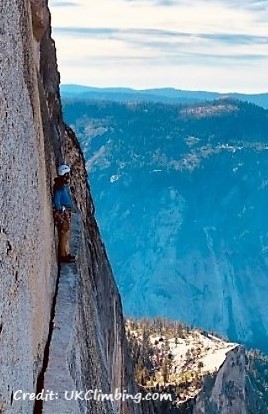
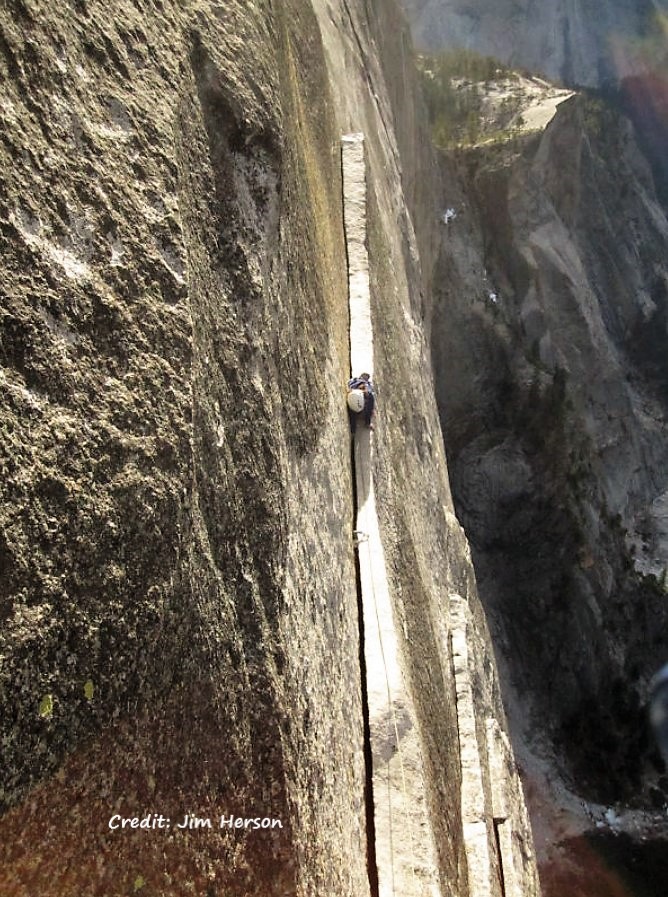
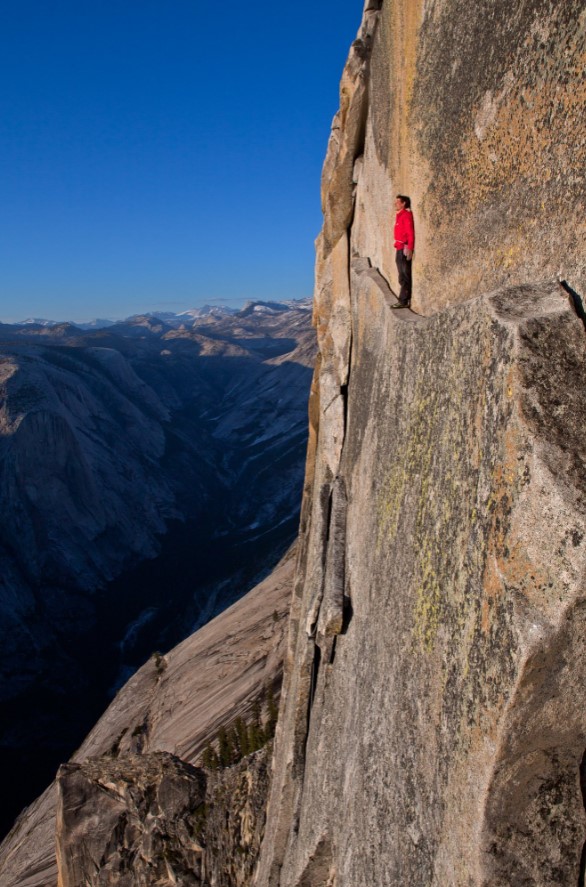
Credit: Jimmy Chin 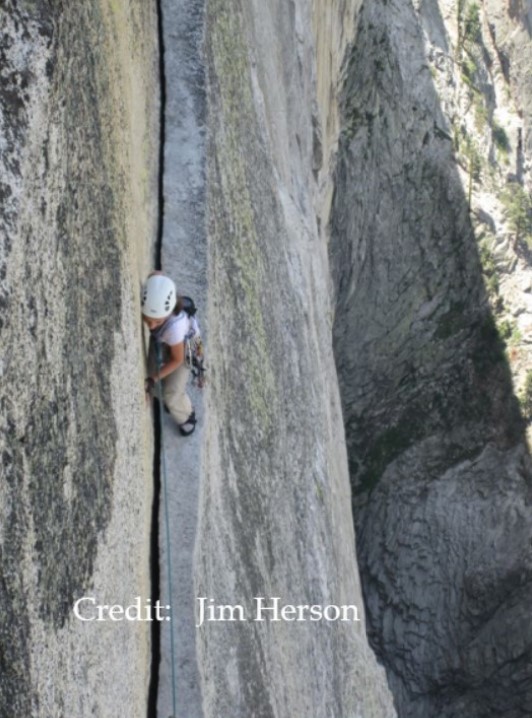
Half Dome’s Summit Pitch
The first ascent party had reported using ¾ inch pitons here. I was using 1½ inch ones – hmmmmm. Being a traverse pitch, I had to climb this 3 times. Also, I had to lower the pack down and it was the only time it got caught. I prussiked* down to free it. Here, the full exposure of the wall hits you. Much of the way the climbing was in corners or chimneys, but now it was just a smooth wall to the ground. Two more pitches with one having the only tricky aid on the route and I was at the summit pitch, the easiest on the route. I climbed it methodically, placing plenty of pitons, not wanting anything to go wrong. The rock at this point is superb and mottled colorful green lichen. I put in an extra good anchor and descended for the last time. Rather than haul the pack, I wore it coming back up the climbing rope, now much diminished in weight.
After the Summit
I had a lot of food left over, some of which I gave to hikers who had come up the Cables. Incidentally, the Cables Route** is not a small project. The round trip up Half Dome using the Cables Route is 16 miles with 4800 feet of elevation gain. One person, also from Berkeley, was tickled when I gave him a can of tuna from the Northside Coop where he usually shopped.
I got everything together and packed up, went down to the camp from 3 nights ago and switched into my hiking shoes, for which my feet were grateful. Jim Bridwell and some friends met me at Happy Isles campground, congratulating me and said it was the best thing anyone had done in quite a while. There was a very nice party in Camp 4 where wine flowed freely.
Eric’s Epilogue
Jerry hiked up the Cables to the top of Half Dome, and then over to Clouds Rest where he spent a night. He then hiked out to Tenaya Lake and hitchhiked back to the Yosemite Valley.
Jeff Foott would go on to do the first one day ascent of Half Dome with Steve Roper, author of the first Yosemite climbers guide. Jeff became an excellent wildlife photographer. His film on the lions of Torres del Paine (Chile) was featured in the PBS series, The Living Edens. Jeff also did something really smart: in the 60s, he bought 5 acres in Jackson Hole, where he now lives.
Half Dome Stats
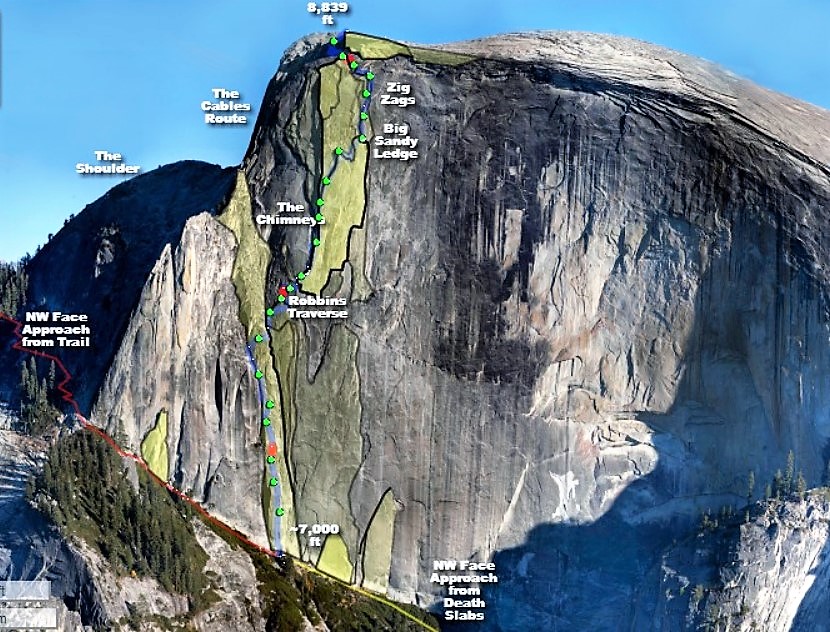
- The NW face route has 25 pitches with 2200 feet elevation gain.
- This route includes 5 traverse pitches, each of which I had to climb three times.
- That summer of 1966, the success rate for the climb was exactly 50%, 11 of 22 attempts, back when you could still keep track of this.
- Not counted as an attempt: Sorting the hardware in camp 4.
- Also not counted: Solemnly resolving with your partner to climb it while in the bar.
- [This “map” is the closest I can come to visualizing Eric’s route up Half Dome]
*From Eric: Prussiking is a technique for ascending a fixed rope. The prussik knot has the property that when you pull on it, it locks – but when you release the tension, you can slide it easily. We use two prussiks and and attach a sling to each, one for each foot. We then raise one foot, then the other, similar to a stair stepper. In today’s world these have been totally supplanted by jumars, mechanical clamps which have the same property; they slide easily when not loaded. Jumars are fast, the only limiting factor is getting out of breath. In modern day wall climbing, the second always follows on jumars.
__________________________
Many thanks to Eric for sharing his epic tale, and congratulations!
Climbing Half Dome Today
Currently, Half Dome may be summited in several different ways. There are over a dozen climbing routes up Half Dome’s vertical northwest face. Other technical routes ascend the south face and the west shoulder.
Although the first ascent by Robbins, Sherrick, and Gallwas took five days, most ascents now are accomplished in two. Eric’s solo climb took 3 days. The NW route has now been free climbed (meaning, no ropes!) several times in a few hours’ time.
Alex Honnold amazingly made an un-roped ascent in 2 hours 50 minutes. For more on Alex, check out this trailer of the film, “Free Solo”, about his ascent of El Capitan, by National Geographic. The film can be streamed on Disney+; it was astonishing, and made my palms sweat!
The Cables Route up Half Dome may be used by Hikers to reach the Summit
**There’s also a way up for those who are not technical climbers. Thousands of hikers reach the summit of Half Dome each year by following the Cables Route, an 8.5 mile trail from the valley floor. After a rigorous 2 mile approach, including several hundred feet of granite stairs, the final pitch up the peak’s steep east face is ascended with the aid of a pair of post-mounted steel cables. These were constructed in 1919, close to the original Anderson route.
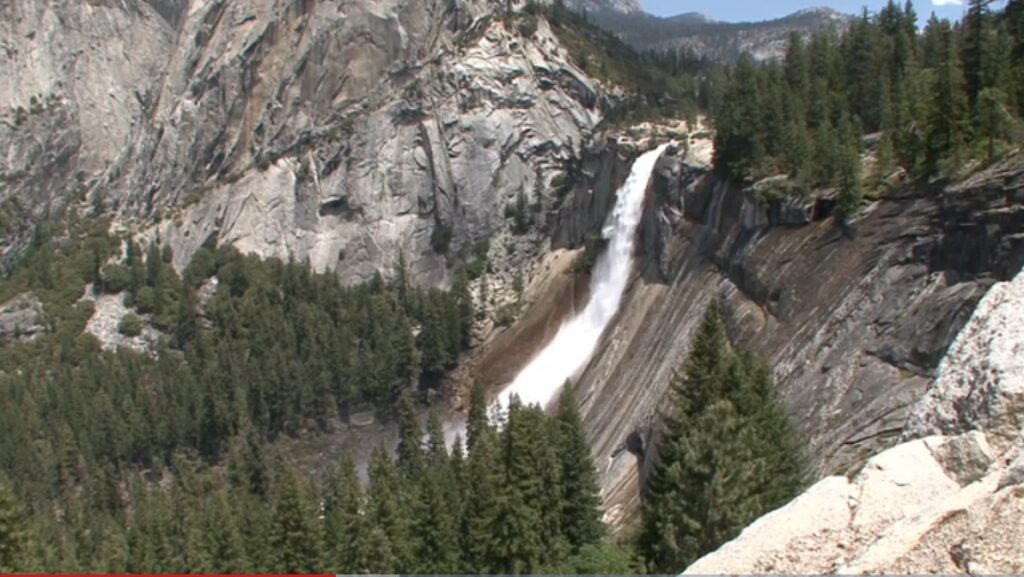
The Cables Route is spectacular, passing Nevada Falls, and other beautiful sights and resting spots, but – This is no casual hike! Check out Yosemite Park’s gorgeous video of this hike: NPS Video of hiking Half Dome with The Cables.
If you do want to try this hike, there’s a lottery system for the permits – and they usually are snapped up immediately. The Cables Route is open from late May to mid-October, and the application is available March 1-31. Apply here.
It is really steep, and potentially slippery, here at the end where you use the cables:
There are Web Cams that display different areas of Half Dome – Daily updating time-lapse movies of Half Dome
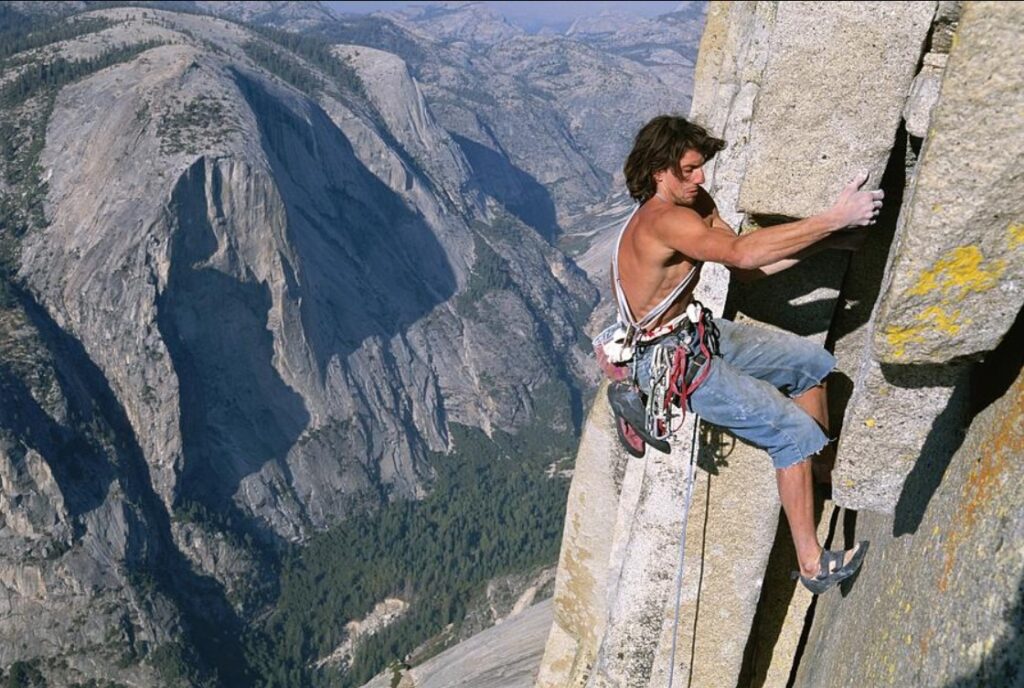
Some beefcake, for my solo women travelers…🥱
Are you inspired? I’ve only driven casually through Yosemite without really exploring much; I think I need to go back there – not that I’ll be doing any climbing! If you have suggestions about what not to miss there, please let me know.
I hiked up a 14-er in Colorado, Mt. Sneffels, several years ago with a group of Girl Scouts; nothing like this. Have you climbed a mountain? And if you have any questions for Eric, fire away…
~Pin for Later~
How to navigate Travels With Suz
Did you sign up for my newsletter yet?
Did you sign up for my newsletter yet?
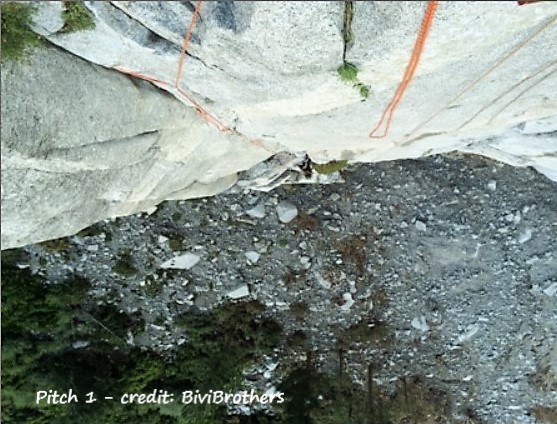
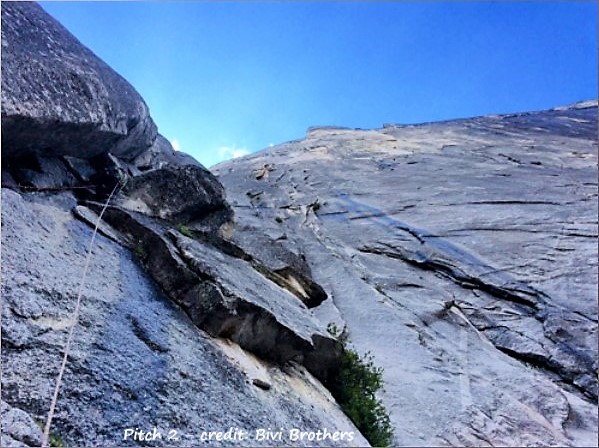
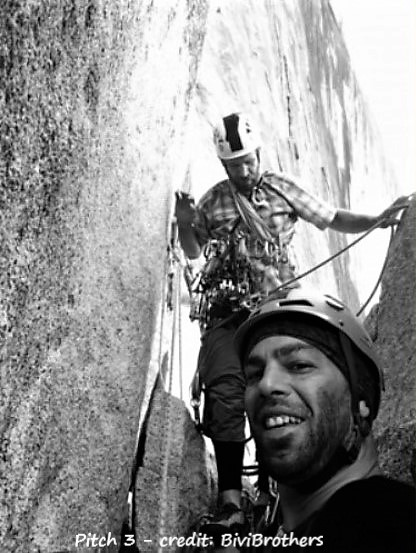
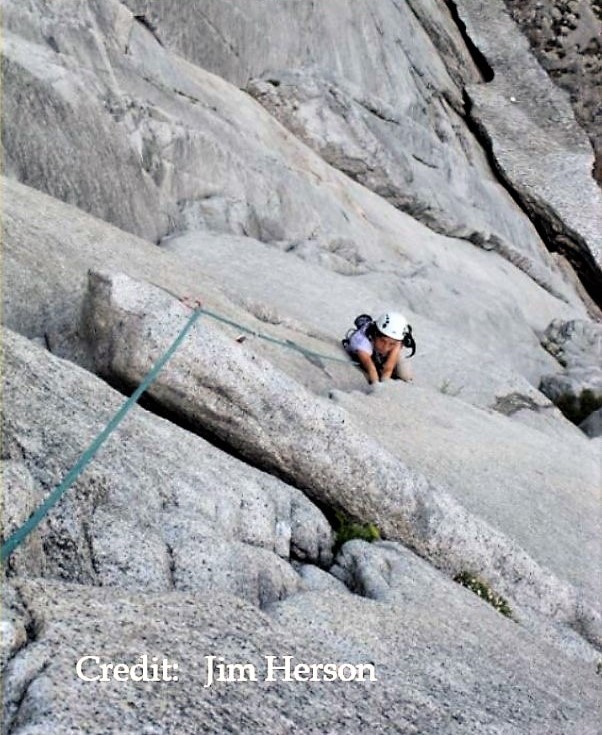
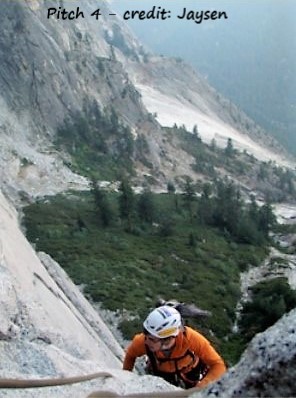
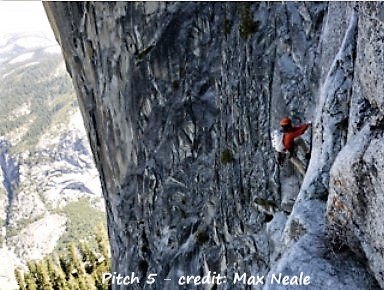
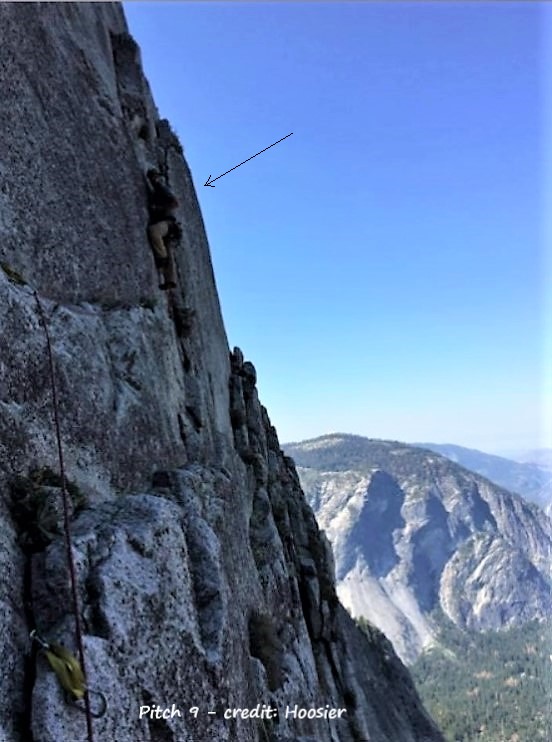
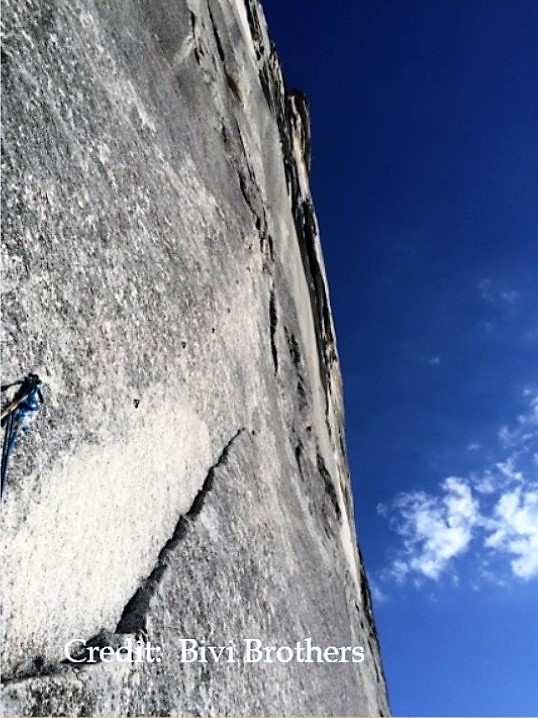
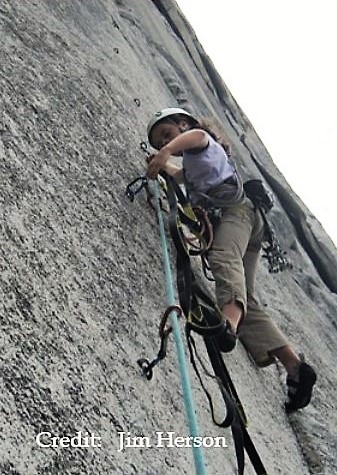
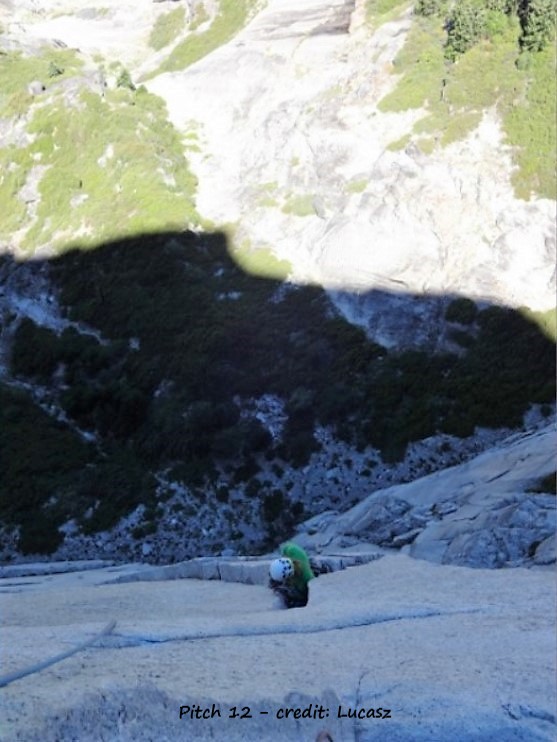
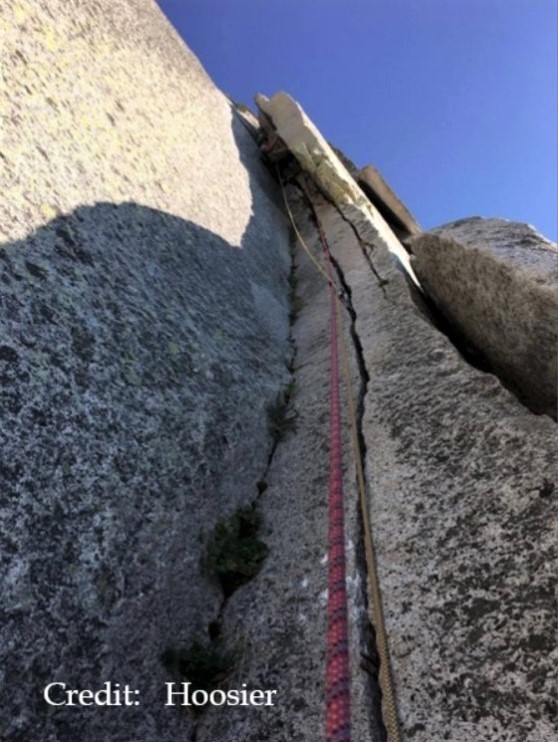
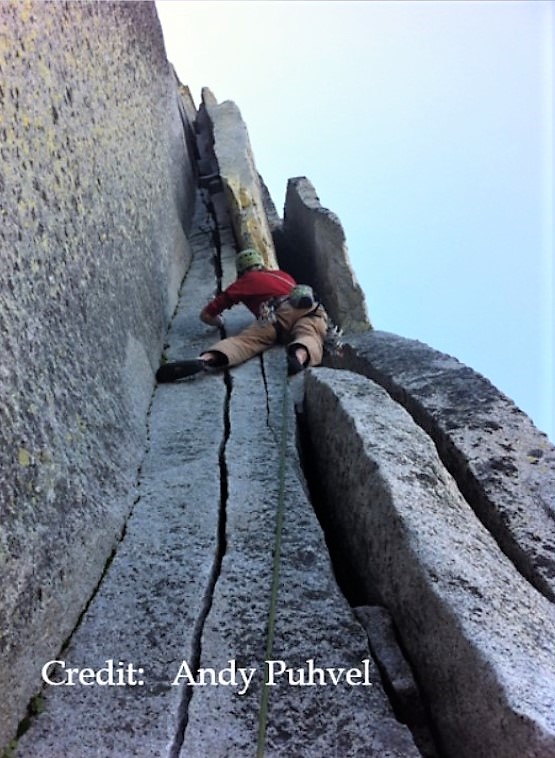
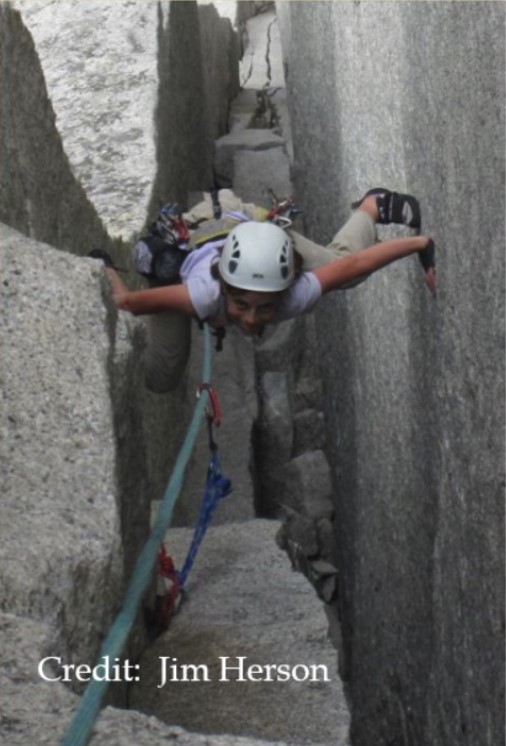
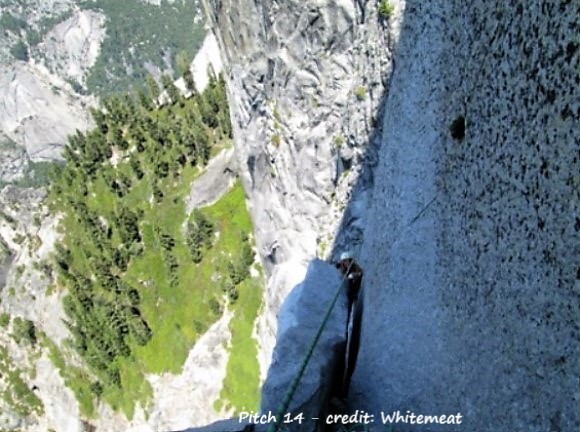
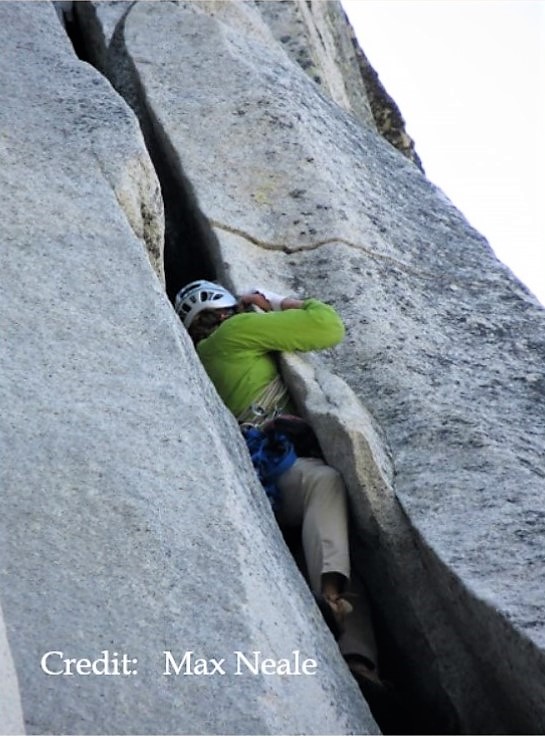
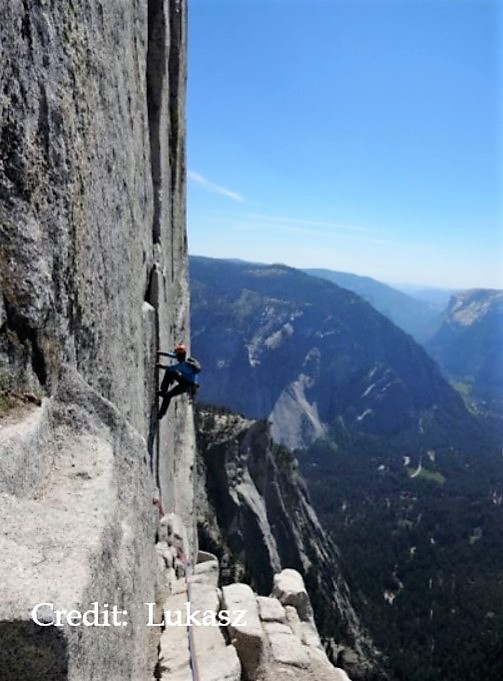
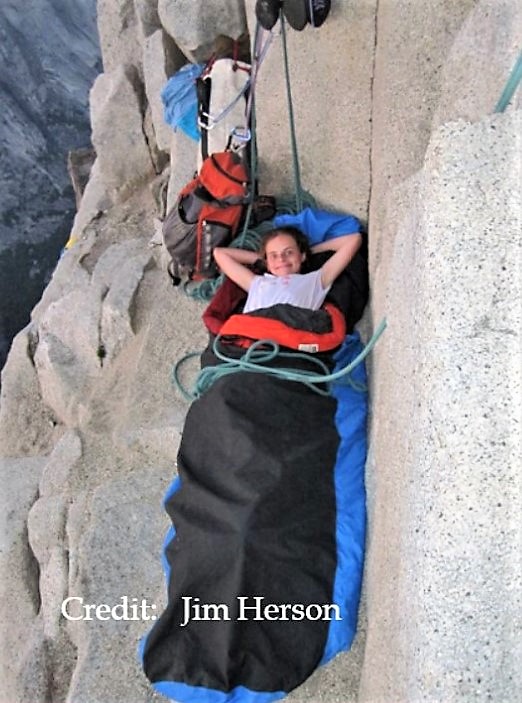
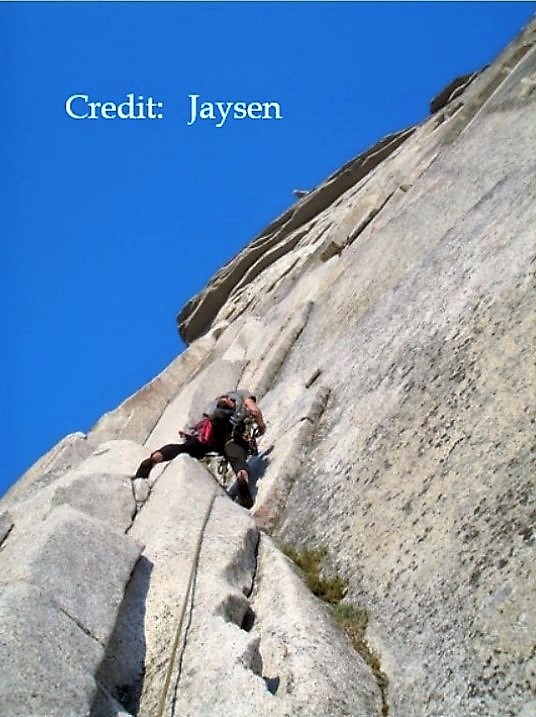
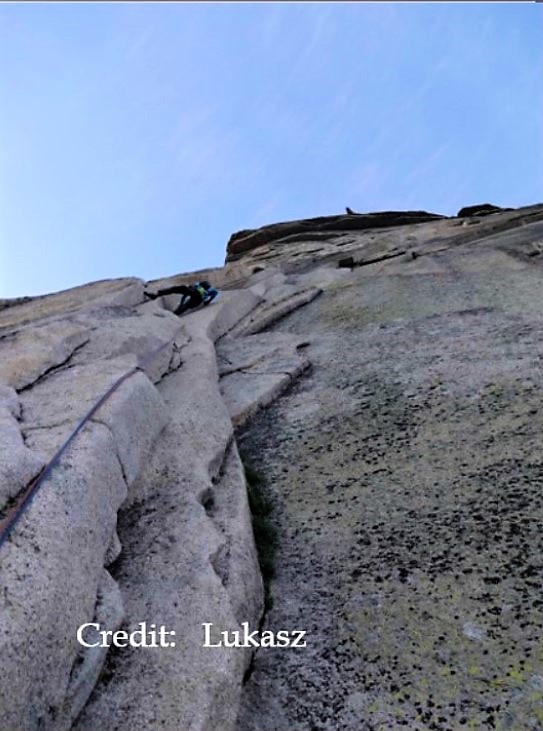
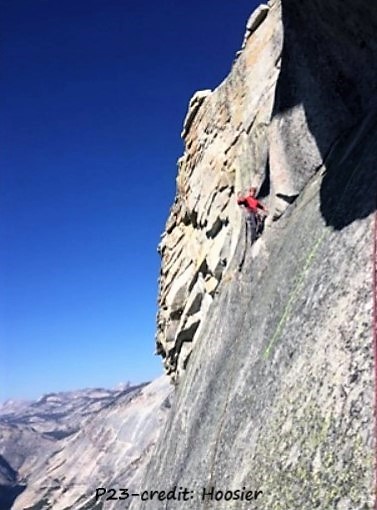
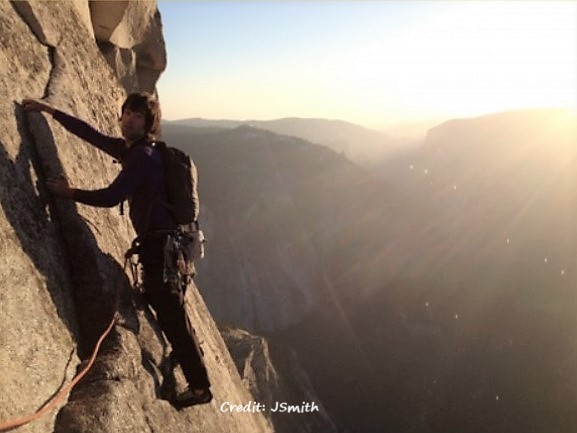
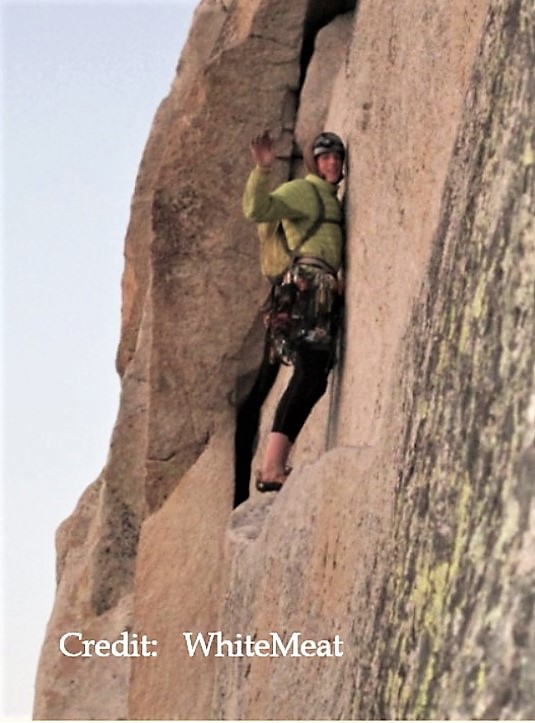
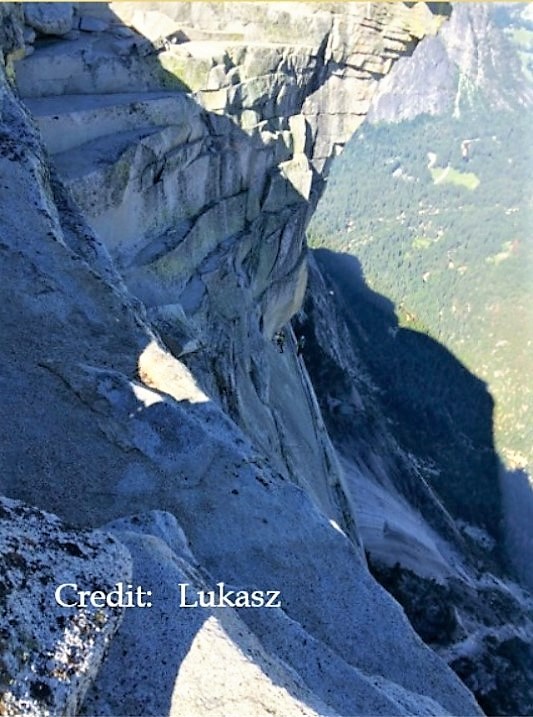
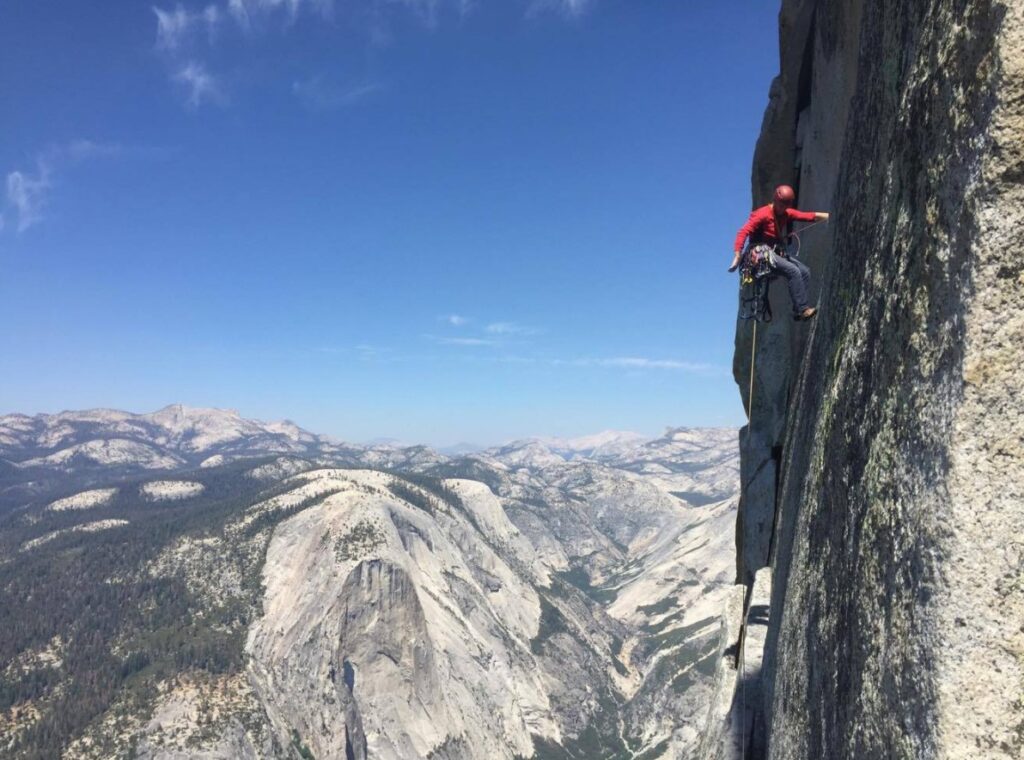
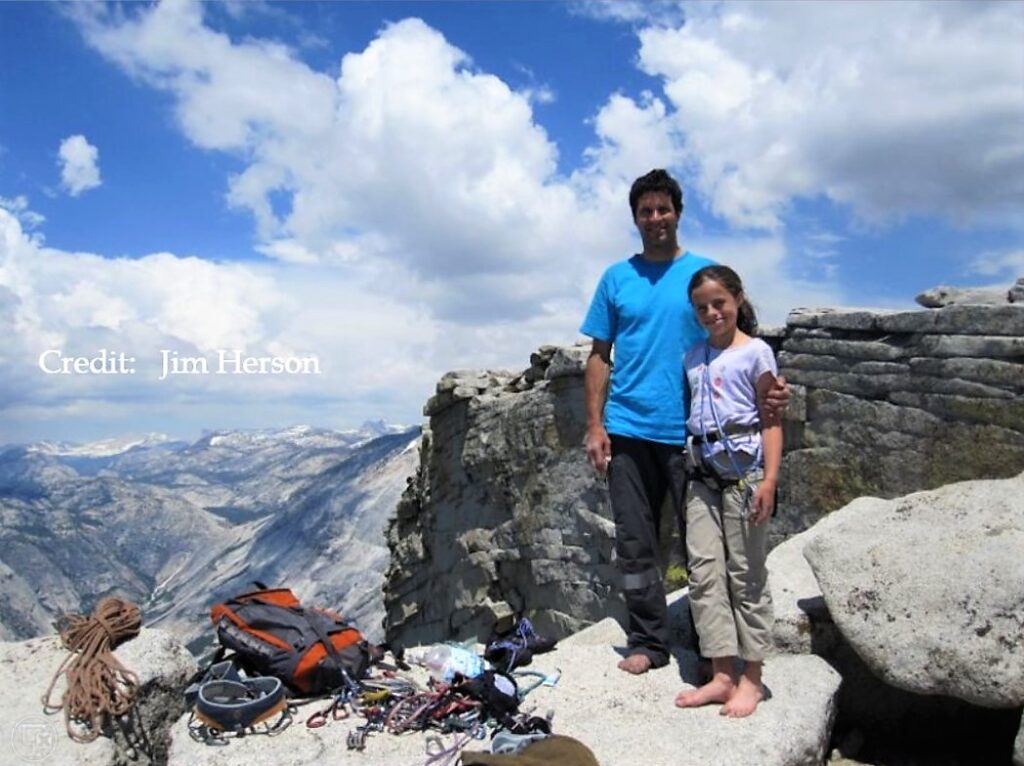
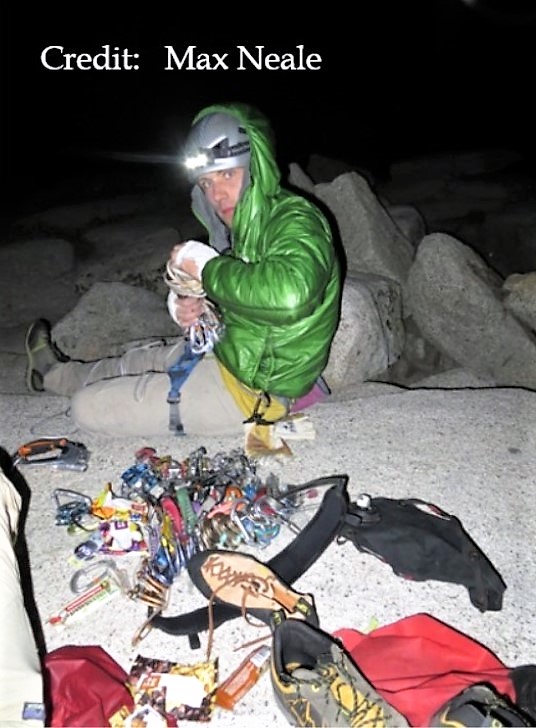
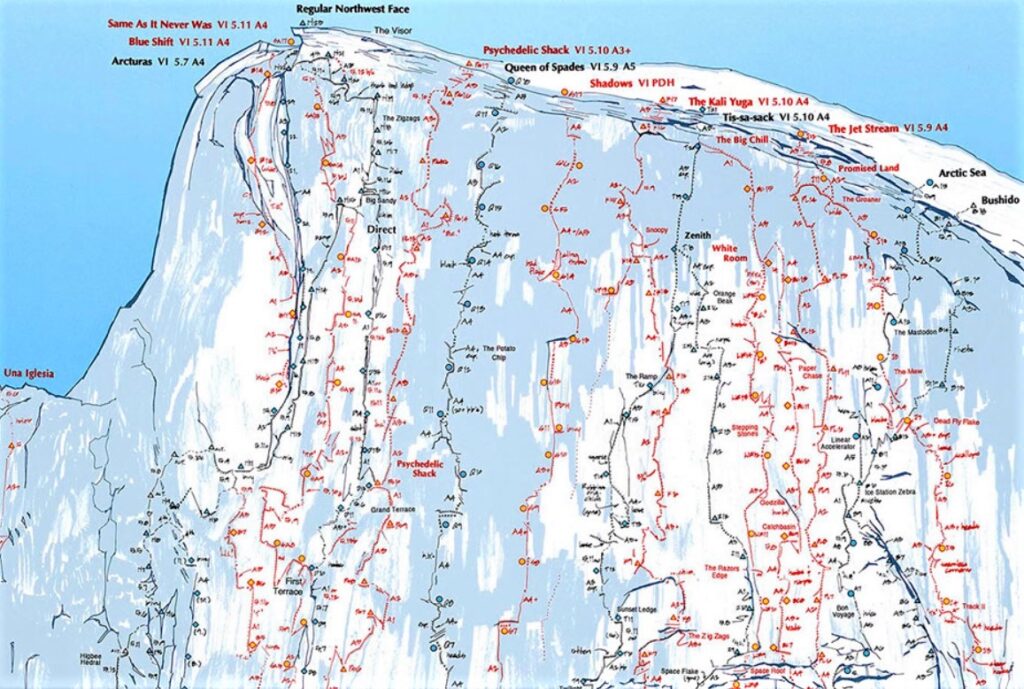
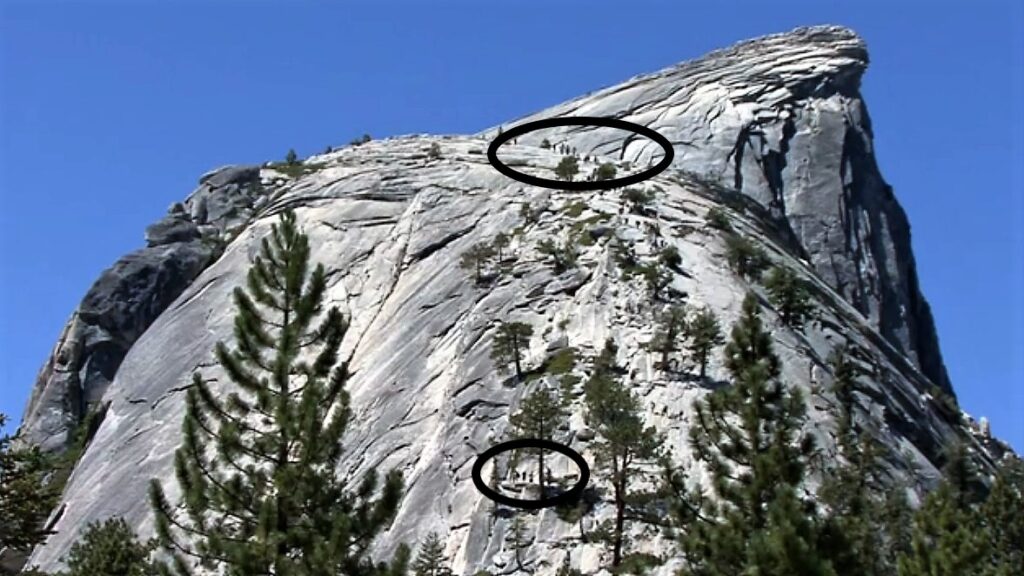
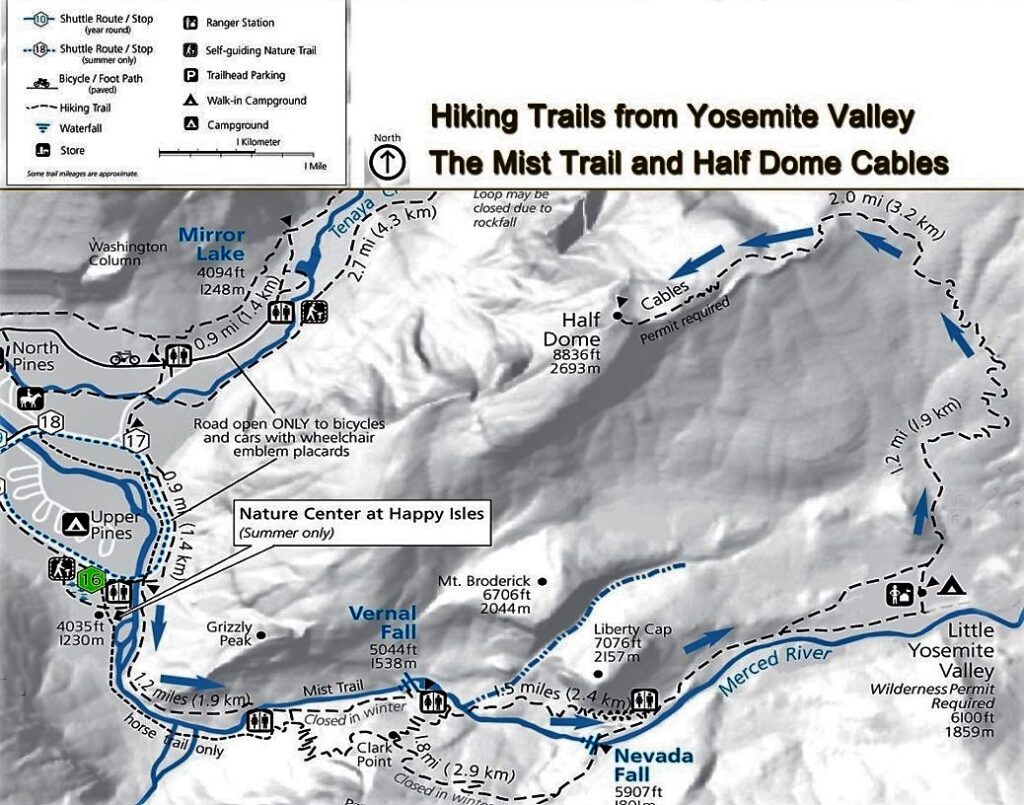
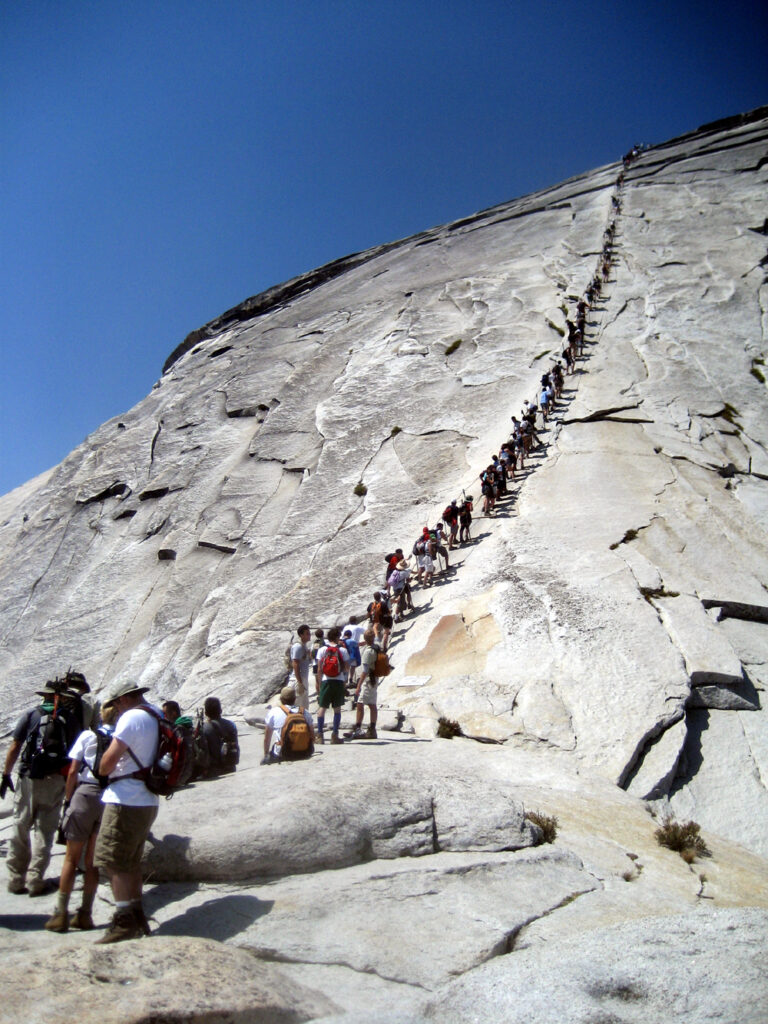
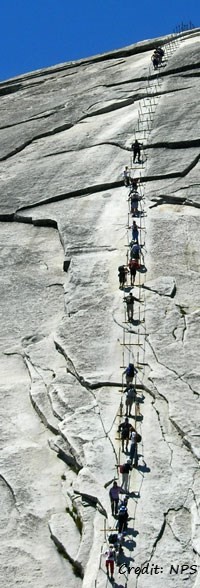
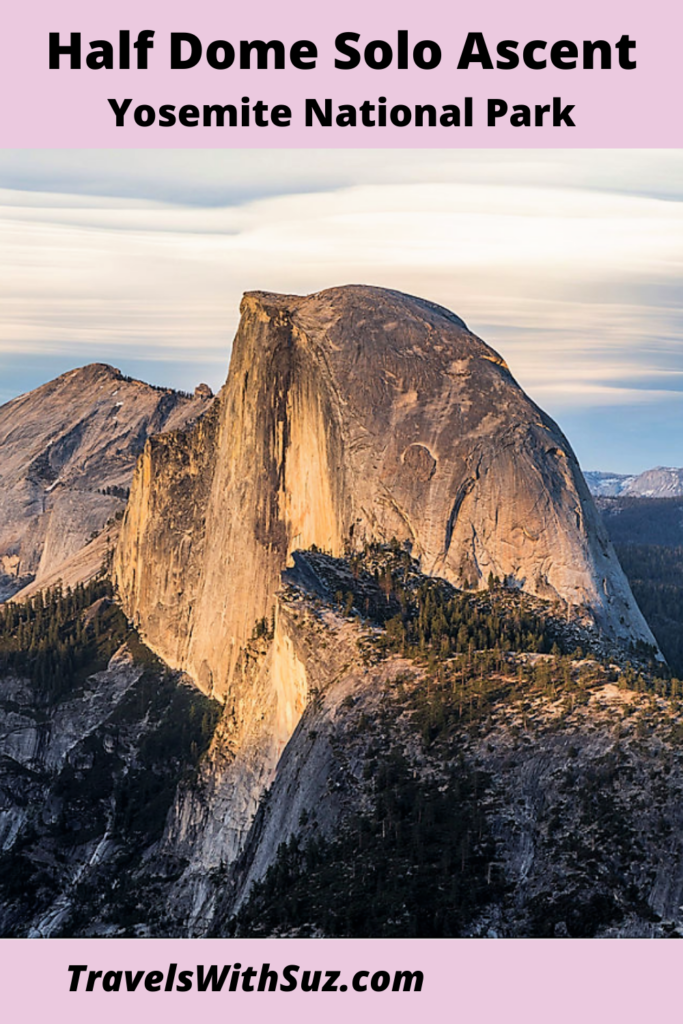
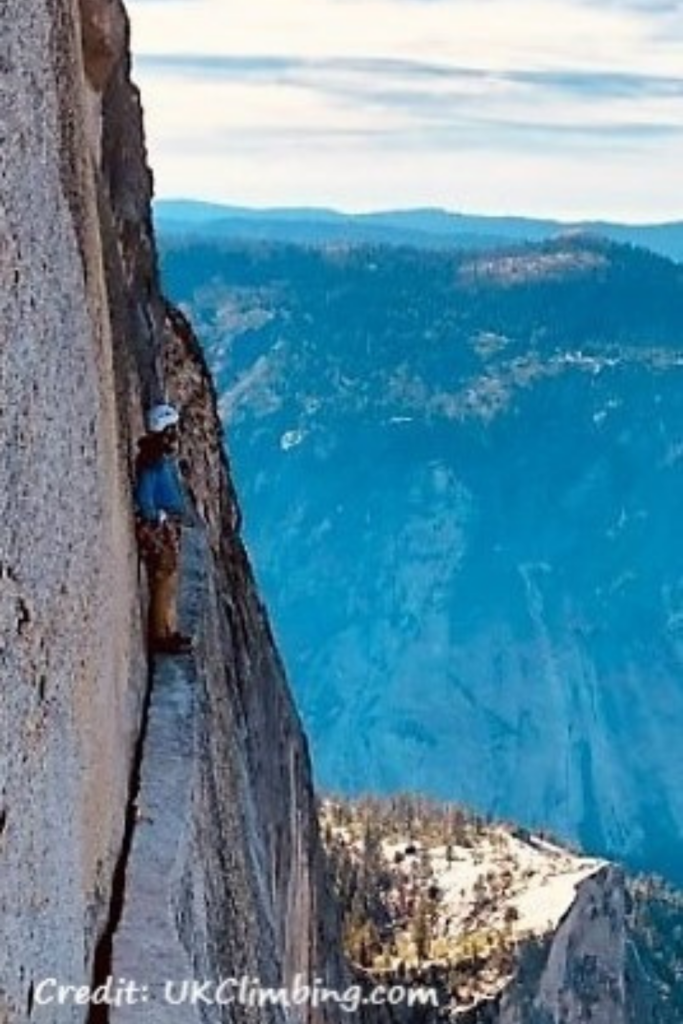
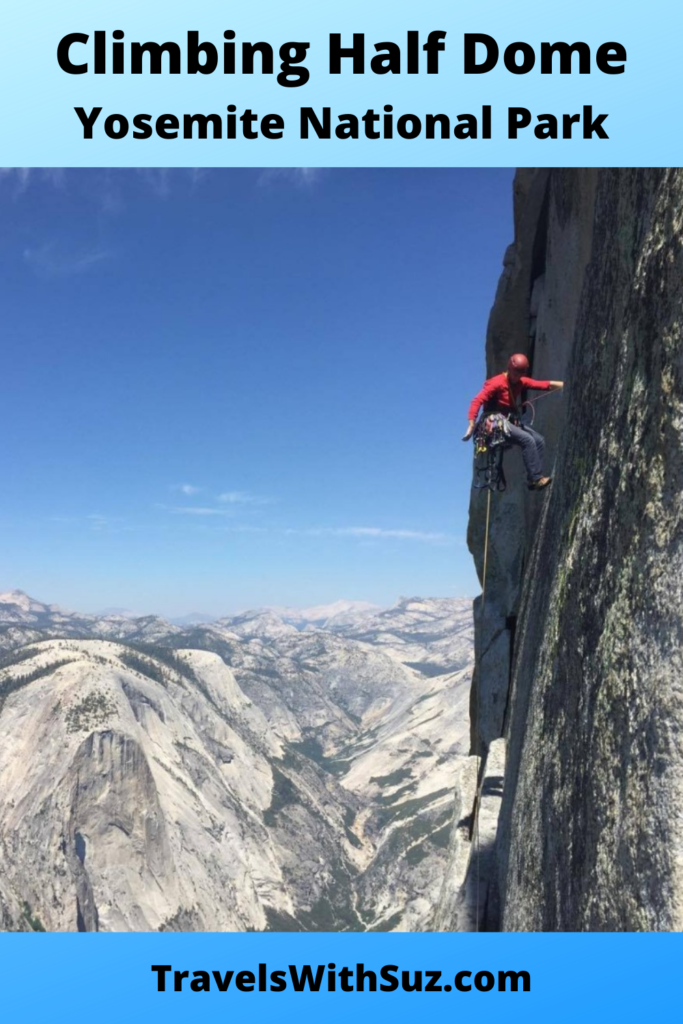
Wow what an amazing story! Very inspiring, that looks like it was quite the feat!
I give so much credit to these guys (and gals) – while it looks exciting, it also looks dangerous!
What a feat! I just can’t imagine it, not being a climber. The preparation, the planning, the fitness level…all so incredible!
Very inspiring! I have never tried rock climbing, but I can imagine how much physical AND mental strength you need to succeed… not to mention perseverance and courage.
The mind is an amazing thing! Just awesome what we can accomplish when we put our mind to it.
Isn’t it amazing what we can do when we set our mind to something.
this is truly inspiring, Eric seems fearless! i never knew how anyone slept overnight or rested, so that photo on Big Sandy was super cool.
Yeah – and, that little girl that did this climb; the one on the ledge? She was 12 years old when she did it!
Wow. People are amazing and do amazing things!
Wow. What a spectacular story! I don’t think I’d ever have the courage to climb it any other way than the cables lol. My husband has done that and once the kids get older we’ll try it but even that looks somewhat terrifying to me!
This is such a cool story! Half Dome is so special to me. I have done the cables route a few times but would never fathom rope climbing the face! He’s so brave! I can’t believe how many pitches and multiple attempts. What a feat!
Agreed! I’m very impressed that you did The Cables – that looks like a tough hike too – 16 miles round trip. And, more than once!
Yosemite is fantastic – never climbed but love to adventure from the valley floor 🙂
Thank you for this wonderful article. I wonder, what compels people to do things like this?
Did you interview Eric? If you’re thinking of a live interview, please let us know – I’d definitely be interested.
Wow! This is really amazing. I used to climb in my early twenties but haven’t done it in over a decade! I’ve been to the top of Pike’s Peak (Colorado) but I drove up there, I always thought the people who climbed it were crazy. This is amazing though and definitely a great accomplishment.
Downright impressive! Not for me, not for any amount of money, but wow!
This is crazy! In a cool way haha. I’ll probably never do anything like this but wow I’m so impressed. I used to love rock climbing in indoor gym as a kid, this is next level 😛
My friend and I went to Yosemite but I nixed the cable climb at the Half Dome because I hadn’t hiked in years and heights aren’t my fav. Amazing story! My husband wants to start rock climbing and this was fascinating.
Fascinating. I’m always amazed at what calls people to do such daring things.
How scary, climbing through places that later fell off!
I love this story with your interjections! I’m in awe. Too chicken to do something like this 😁
I got butterflies in my stomach just looking at some of what was accomplished….Unbelievable stuff!
Well done! I prefer my feet on the ground taking the pictures, but my gang is the one going vertical!
Wow, this is amazing! I am too afraid of heights, but I can appreciate this climb!
If you think these photos are scary, watch “Free Solo,” the movie linked above – when I watched it the other night, I was cold and bundled up, but my palms and the soles of my feet were sweaty, watching A. H. do terrifying things with no ropes!
Wow! I am so impressed! Great trip!
Wow!! That looks…terrifying LOL. What a cool experience though!
Wow. That looks amazing. I would not be rock climbing but the hike up there looks really neat. Thanks for sharing. What an accomplishment for the hiker in your interview.
With my fear of heights I could never do this. However, I enjoyed reading about the Half Dome and viewing your pictures. My heart only fluttered a few times imaging the heights. LOL Thanks for sharing.
Wow!! and parts have fallen off! How amazing to climb this alone.
What an amazing accomplishment! And it is so cool you’ve had these opportunities to chat with him!
An amazing adventure and awesome photos. Congratulations on your climb.